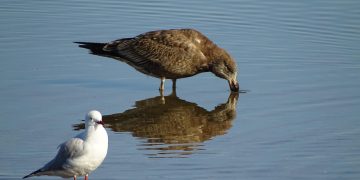Natural capital – soil, forests, water, living organisms – underpins the functioning of our society. The ecosystem services that it provides facilitates our global economy – whether that is through the provision of raw materials or the regulation and maintenance of a stable and healthy functioning environment. The economic value of these ecosystem services has been estimated by the WWF as up to US$125 trillion per year, well over annual global GDP.
However, modern economic systems have repeatedly underpriced natural capital, as it is not officially recognised as an economic asset. The actual payments within the economy for ecosystem services is therefore 40 times lower than their estimated value. This has allowed for continued underinvestment in our natural assets, ultimately leading to their systematic degradation of quality and depletion.
Given this mismatch in valuation, environmental pressures have accelerated intensely over the last few decades, as the economy has sought to achieve persistent growth in GDP at the expense of the planet. Indicative of these pressures is the fact that humanity is using nature 1.7 times faster than our planet’s biocapacity can regenerate. For example. there has been a threefold increase in global material extraction since the 1970s, and a 70% increase in water use over the last 50 years. Consequently, the current rate of global biodiversity loss is higher than any other time in human history.
Within this context, we have produced this Natural Capital & Biodiversity Primer – the first in a series – outlining why it is important for financial institutions to understand associated nature-related risks. The Network for Greening the Financial System (NGFS), a network of over 125 central banks and financial supervisors, concluded that nature-related risks could have significant macroeconomic implications, and the failure to account for, mitigate and adapt to these risks could undermine individual financial institutions as well as broader financial stability. The primer dives into the areas of:
-
The financial implications of physical nature risks at an economy, sector and company-level;
-
The rapidly changing policy environment (e.g. Global Biodiversity Framework and EU Deforestation Regulation);
-
Nature-related litigation (e.g. under European due diligence regulations);
-
Market-based action in the form of consolidated nature-related disclosures (e.g. Taskforce on Nature-related Financial Disclosures) and harmonised target setting (e.g. Science-based Targets for Nature); and
-
Growing consumer and investor awareness.
The primer is accompanied by our Natural Capital & Biodiversity Cheatsheet, which outlines key concepts and frameworks in more detail to support understanding of this topic.
Fonte: Schroders



















































